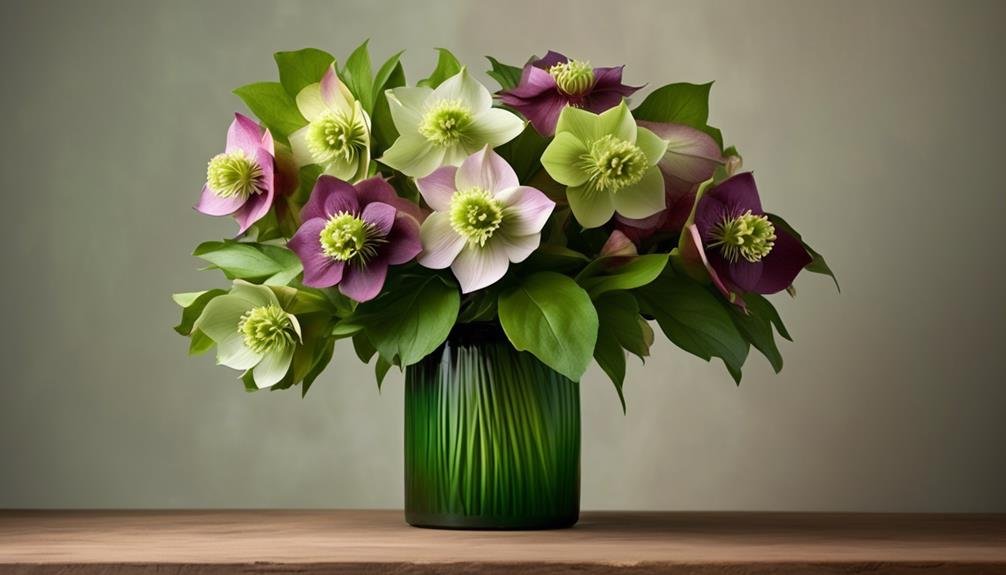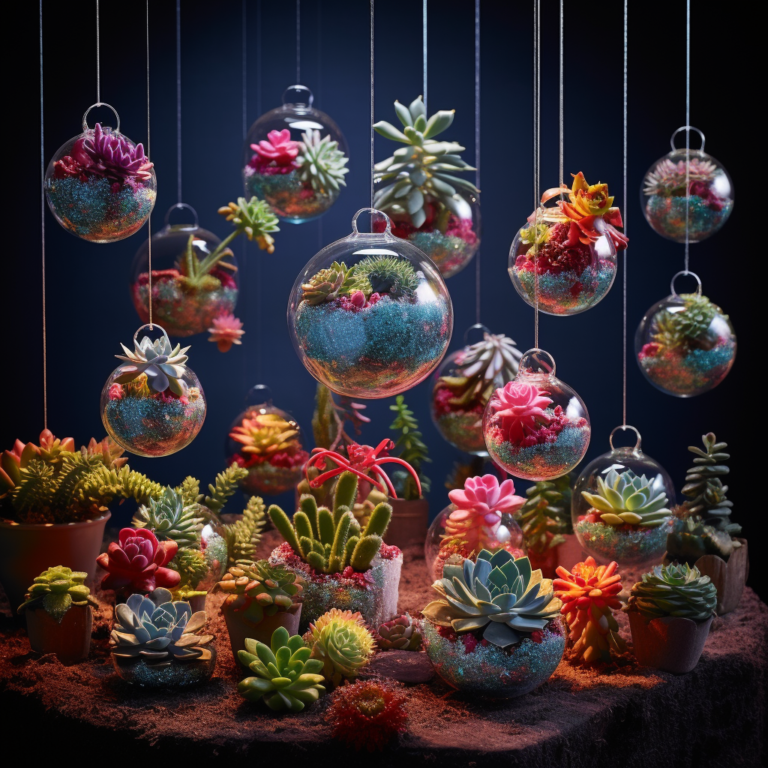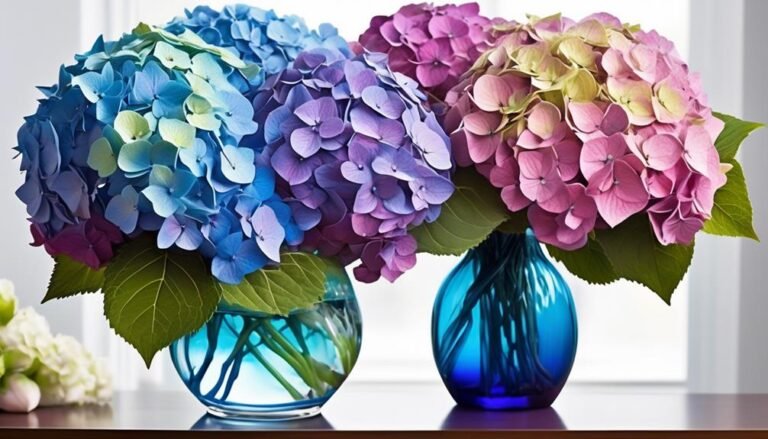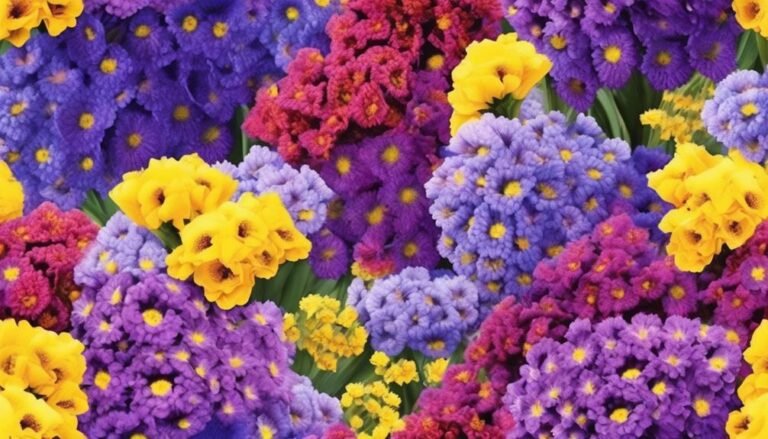Popular Types of Florist Flowers – Hellebore
Hellebores, also known as Lenten or Christmas roses, are captivating florist flowers with a wide range of colors. These early blooming flowers typically flower between late November and April, making them a popular choice for floral arrangements and bouquets. They prefer cool temperatures and well-draining soil, adding an intriguing touch to any botanical collection.
Scientific Name and Background History:
Hellebores belong to the Ranunculaceae family and are known for their early blooming nature. They have a rich history in folklore and medicine, with some varieties being used for medicinal purposes.
Physical Description, Colors, and Characteristics:
Hellebores have a unique cup-like structure and delicate appearance, making them a charming addition to any floral arrangement. They come in a variety of colors, including white, pink, purple, and green, adding a stunning diversity to any bouquet.
Varieties Available:
There are numerous varieties of hellebores available, each with its own unique colors and characteristics. Some popular varieties include Helleborus niger, Helleborus orientalis, and Helleborus foetidus.
Seasonal Availability:
Hellebores bloom between late November and April, making them a popular choice for winter and early spring floral arrangements.
Care Tips:
Hellebores thrive in cool temperatures and well-draining soil. They require minimal maintenance and can be enjoyed as cut flowers for an extended period.
In conclusion, hellebores are not only visually stunning but also have a fascinating history and unique characteristics that make them a popular choice for florist flowers.
Scientific Name
Helleborus, commonly known as hellebore, is a genus of flowering plants in the buttercup family, Ranunculaceae. Native to Europe and Western Asia, hellebores encompass around 20 species of herbaceous or evergreen perennial plants.
Medicinal Uses:
Helleborus has a long history of use in medicine, particularly in ancient Greek and medieval medicine. It has been used to treat various conditions, although it contains toxic compounds and should only be used under the supervision of a qualified healthcare professional.
Symbolism in Art:
In art and literature, hellebore is symbolically linked to transformation, protection, and healing. Its association with Christmas and the winter season has made it a popular choice for holiday-themed decorations. The delicate, bell-shaped flowers and deep green foliage of helleborus have inspired artists and storytellers, adding a touch of mystique and charm to various cultural representations.
Conclusion:
The enduring allure of helleborus in both medicinal and artistic realms underscores its significance in human history and culture. Its intricate details and symbolic meanings have inspired hope, resilience, and the cyclical nature of life, making it a captivating subject for artistic expressions.
Background History
Hellebore, also known as Helleborus, has a rich historical background rooted in ancient Greek mythology and medieval folklore. This plant holds significant cultural and botanical importance in Europe and Western Asia.
Legends and Mythology:
Hellebores are associated with the tale of the 'Christmas Rose.' According to folklore, a young girl named Madelon collected delicate white hellebore flowers as a gift for the baby Jesus, and they miraculously turned into a deep, rosy hue. This enchanting legend adds to the allure and significance of hellebores in various traditions.
Cultural Significance:
In medieval times, hellebores were revered for their alleged protective and healing properties. They were used in rituals, remedies, and cultivated in monastery gardens. Hellebores were believed to drive away evil spirits and were often used in charms and spells. Their cultural significance extended to being associated with purity, tranquility, and hope.
Botanical Mystique:
The enduring tales surrounding hellebores contribute to their botanical mystique, making them a captivating subject for florists and enthusiasts alike. The plant's long history and folklore continue to enhance its appeal, connecting modern admirers to the rich cultural heritage and beliefs of the past.
Physical Description

Hellebores, also known as Lenten roses, are perennial plants known for their evergreen and herbaceous varieties. They have a wide range of foliage colors, from dark green to vibrant lime green, and their shoots emerge in burgundy or green to support the attractive blossoms. The flowers have five petal-like sepals with a center of nectaries and come in various colors, including yellow, maroon, pink, plum, lavender, white, and blackish purple. Some hellebore varieties have speckled or spotted petals, known for their elegant and delicate appearance. The blooms can last for a month or slightly longer, influenced by environmental conditions.
Hellebores bloom between late November and April, with a focus on flower production during this period. They require well-draining, rich soil with partial to full shade, regular watering, and a layer of mulch to protect the roots.
In different cultures, hellebores hold various symbolic meanings. In Greek mythology, they were associated with the goddess of love, while in Victorian England, they symbolized tranquility and peace. Hellebores have also been linked to protection against evil spirits in some folklore.
Colours and Characteristics
Hellebore flowers come in a vibrant array of colors, including white, pink, purple, and green, with sepals in yellow, maroon, pink, plum, lavender, white, and blackish purple. The foliage ranges in color from dark green to vibrant lime green, and some hellebore varieties have speckled or spotted petals, enhancing their elegant and delicate appearance.
The shoots of hellebores emerge in burgundy or green to support attractive blossoms, which are often nodding or drooping in shape with a unique cup-like structure. The plant's flowers are known for their varying colors and unique cup-like structure, with different varieties offering a range of characteristics from spotted petals to nodding or drooping shapes.
Cultivating hellebores requires attention to soil preparation, light conditions, and regular watering. These flowers are often associated with themes of serenity, tranquility, and peace, making them popular choices for gardeners looking to create a calming and soothing atmosphere.
In various cultures, hellebores symbolize protection, healing, and new beginnings, adding depth and symbolism to their already captivating beauty.
Varieties Available
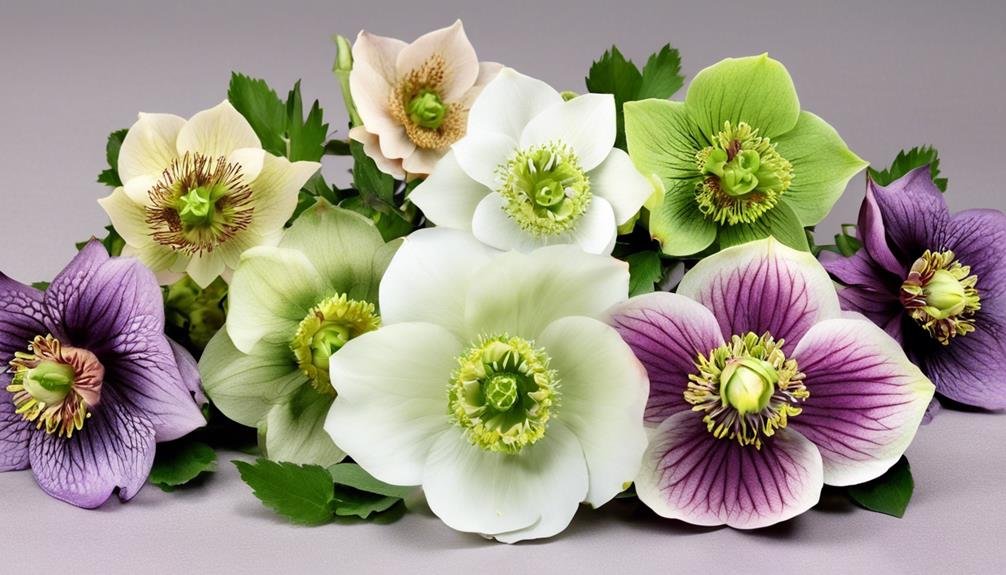
Hellebore flowers come in a diverse range of varieties, each with unique characteristics and attributes. Popular cultivars include the Corsican hellebore (Helleborus argutifolius) with blue-green foliage and light-green blossoms, the Christmas Rose (Helleborus niger) known for its golden sepals and snowy white flowers, and the Lenten Rose (Helleborus orientalis) which showcases blooms ranging from white to purply black. The Stinking Hellebore (Helleborus foetidus) is another captivating option with its yellow-green flowers and crimson-edged petals.
These hellebore varieties come in various colors such as white, pink, purple, and green, making them versatile for floral arrangements. Propagation techniques for hellebores involve careful division of the rhizomes or by sowing fresh seeds. Understanding the distinctive attributes of these popular cultivars and the propagation methods can assist florists in creating stunning floral displays with hellebore flowers.
Seasonal Availability
Hellebores, also known as Lenten roses, bloom from late winter to early spring, typically between late November and April. Their blooming period is influenced by temperature and light availability. As the winter transitions into spring, the moderate temperatures and increased daylight trigger the blooming process of these resilient flowers.
Certain varieties of hellebores may have extended blooming periods, influenced by specific environmental conditions and genetic factors. Hellebores are often associated with the symbolism of hope and rebirth, making them a poignant choice for floral arrangements during late winter and early spring.
Understanding the seasonal availability of hellebores can help florists and enthusiasts appreciate these beautiful flowers even more.
Care Tips

Hellebores thrive in lightly shaded areas with fertile, well-drained soil. They do well in dappled sunlight or high open shade, such as under deciduous trees or on the north side of buildings. It's important to maintain evenly moist soil, so regular watering is crucial, especially during dry periods. Mulching with organic materials like shredded leaves or bark can help retain moisture, suppress weed growth, and provide nutrients as it breaks down.
Pruning hellebores is important for continuous blooming and plant vigor. Deadheading spent flowers redirects the plant's energy into producing new blooms, and pruning in late winter or early spring helps maintain the plant's appearance. Removing old, tattered leaves encourages new growth and helps eliminate overwintering pests or diseases.
What Are the Best Ways to Care for Hellebores and Statice?
Hellebores and statice are popular types of florist flowers that require specific care to thrive. Hellebores prefer partial shade and well-drained soil, while statice thrives in full sun and dry conditions. Regular watering and fertilizing are important for both varieties, as well as deadheading to encourage new blooms.
Conclusion
Hellebores, also known as Lenten or Christmas roses, are popular florist flowers with a unique cup-like structure and delicate appearance. They come in a variety of colors and are a favorite choice for bouquets and floral arrangements.
Hellebores thrive in cool temperatures and well-draining soil, blooming between late November and April.
Their elegant characteristics make them a perfect addition to any floral display, adding a touch of beauty and sophistication.
